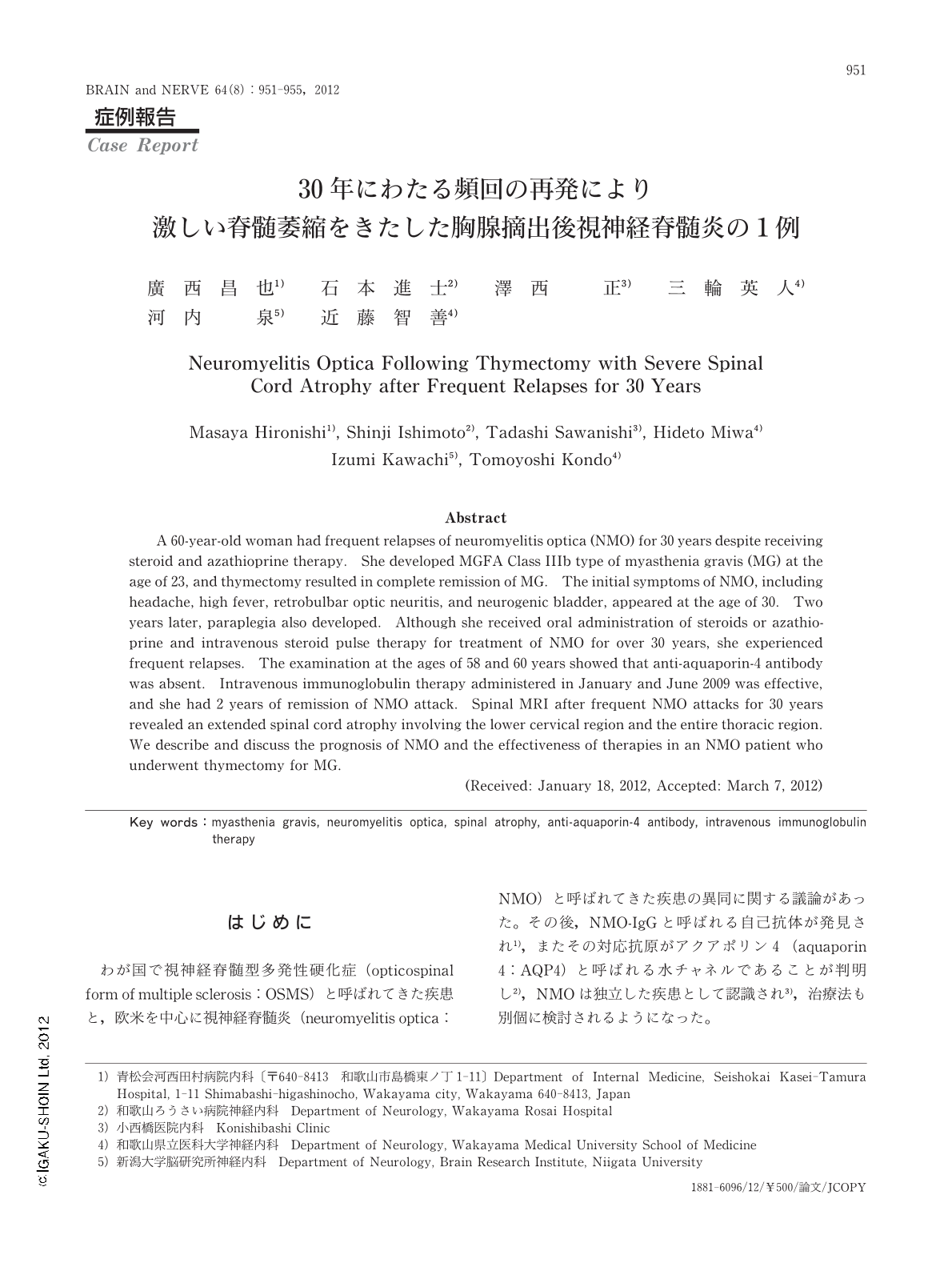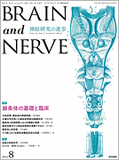Japanese
English
- 有料閲覧
- Abstract 文献概要
- 1ページ目 Look Inside
- 参考文献 Reference
はじめに
わが国で視神経脊髄型多発性硬化症(opticospinal form of multiple sclerosis:OSMS)と呼ばれてきた疾患と,欧米を中心に視神経脊髄炎(neuromyelitis optica:NMO)と呼ばれてきた疾患の異同に関する議論があった。その後,NMO-IgGと呼ばれる自己抗体が発見され1),またその対応抗原がアクアポリン4(aquaporin 4:AQP4)と呼ばれる水チャネルであることが判明し2),NMOは独立した疾患として認識され3),治療法も別個に検討されるようになった。
本例は1986年に,「重症筋無力症の胸腺摘出療法後発症した多発性硬化症の1症例」として報告されたが4),その後も複数の治療法を施行されつつも,視神経炎と脊髄炎の再発を執拗に繰り返し,30年の経過を経て非常に激しい脊髄萎縮をきたすに至った。視神経脊髄炎に関する予後,特に経過にしたがって再発が減少する現象に関する考察を加え報告する。
Abstract
A 60-year-old woman had frequent relapses of neuromyelitis optica (NMO) for 30 years despite receiving steroid and azathioprine therapy. She developed MGFA Class IIIb type of myasthenia gravis (MG) at the age of 23, and thymectomy resulted in complete remission of MG. The initial symptoms of NMO, including headache, high fever, retrobulbar optic neuritis, and neurogenic bladder, appeared at the age of 30. Two years later, paraplegia also developed. Although she received oral administration of steroids or azathioprine and intravenous steroid pulse therapy for treatment of NMO for over 30 years, she experienced frequent relapses. The examination at the ages of 58 and 60 years showed that anti-aquaporin-4 antibody was absent. Intravenous immunoglobulin therapy administered in January and June 2009 was effective, and she had 2 years of remission of NMO attack. Spinal MRI after frequent NMO attacks for 30 years revealed an extended spinal cord atrophy involving the lower cervical region and the entire thoracic region. We describe and discuss the prognosis of NMO and the effectiveness of therapies in an NMO patient who underwent thymectomy for MG.
(Received: January 18, 2012, Accepted: March 7, 2012)

Copyright © 2012, Igaku-Shoin Ltd. All rights reserved.


